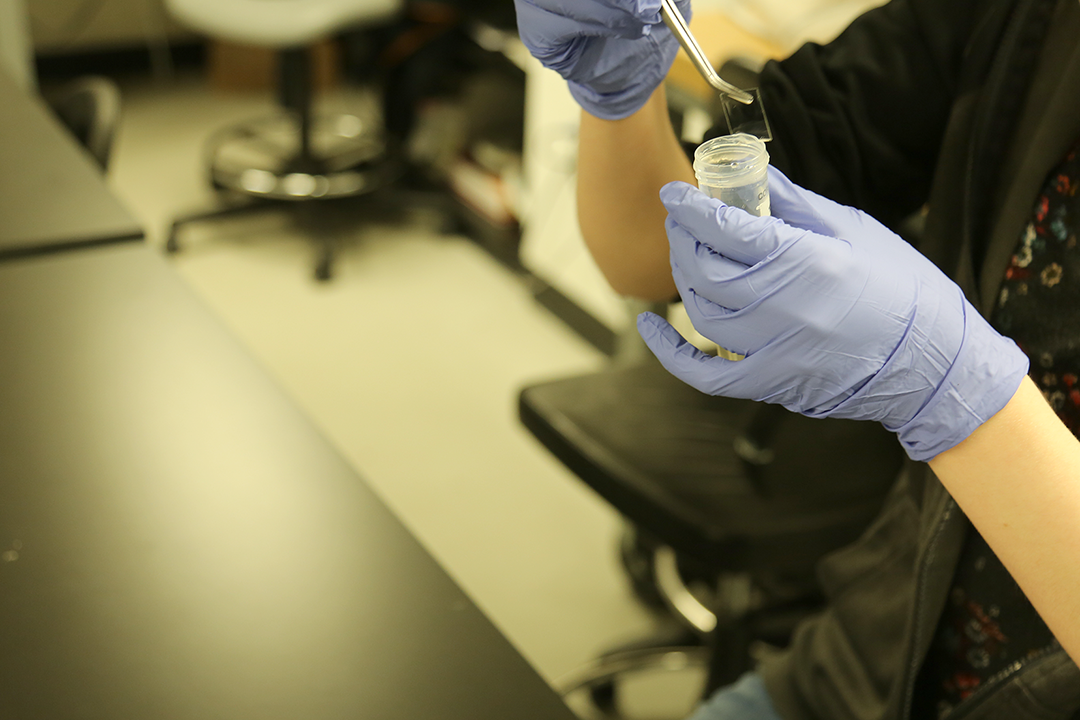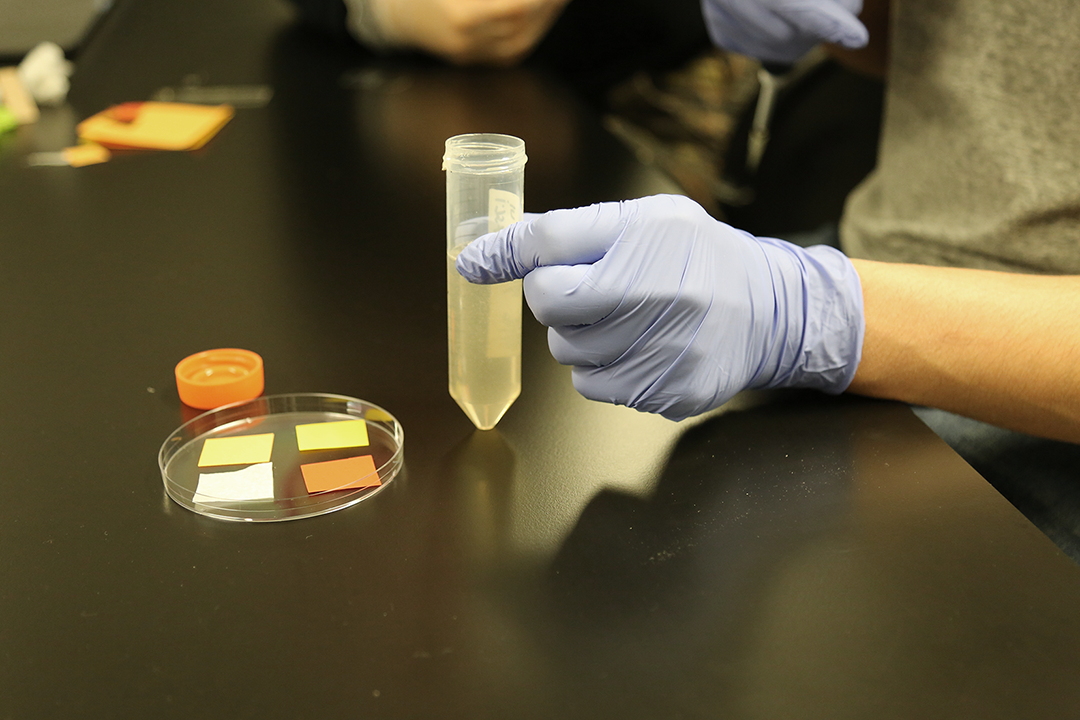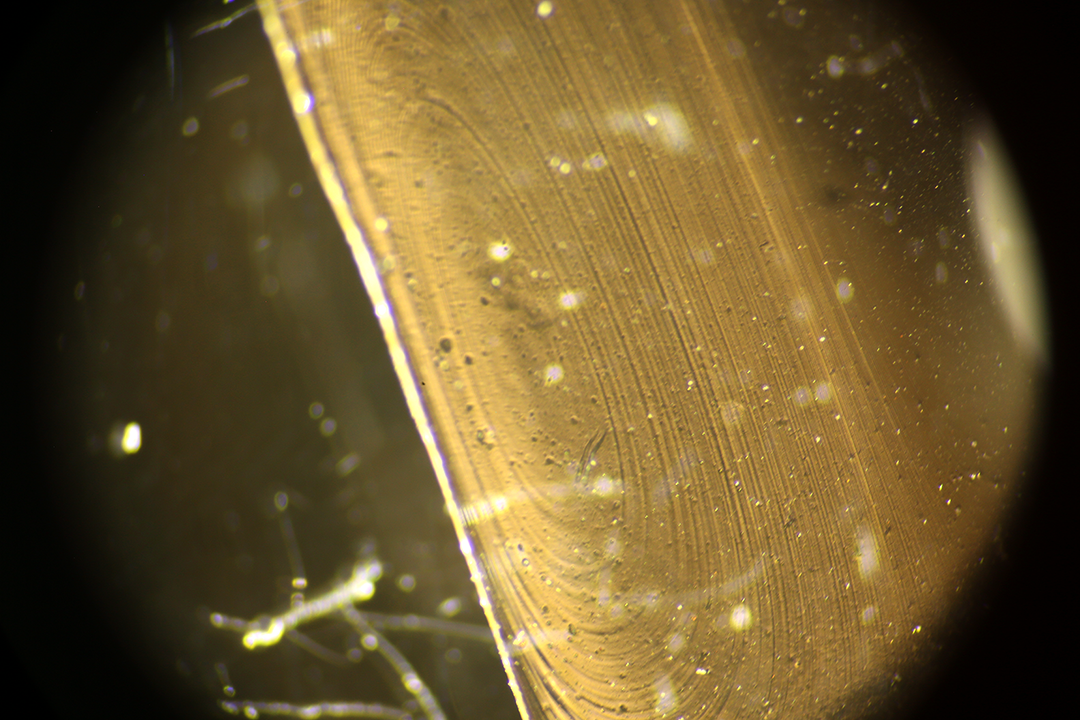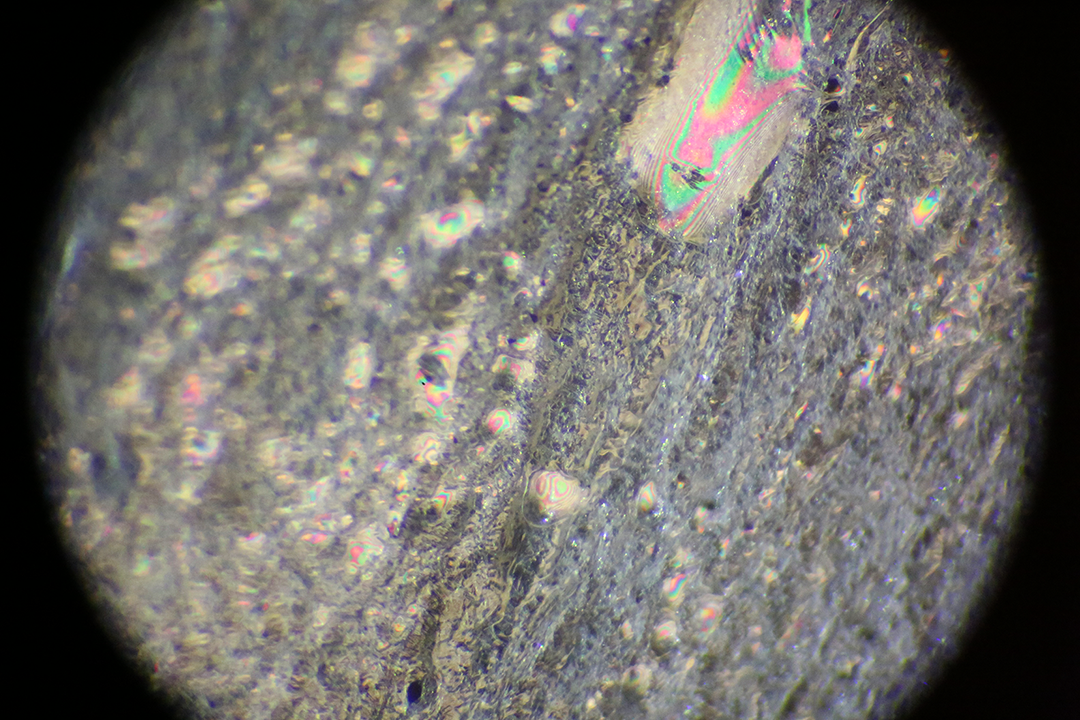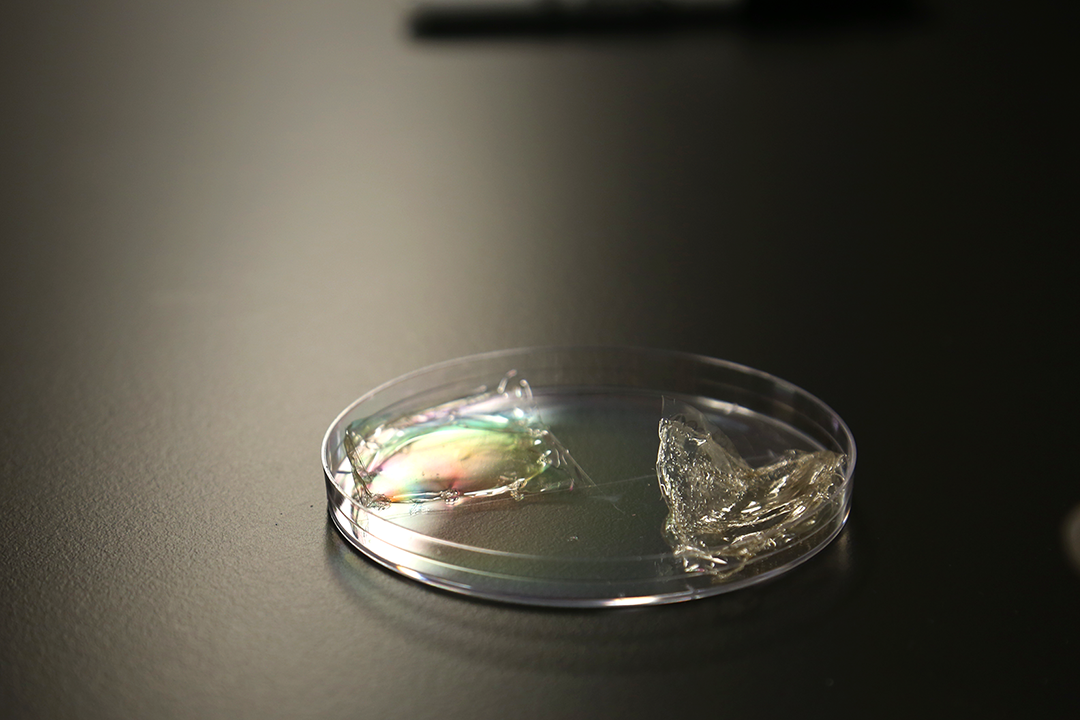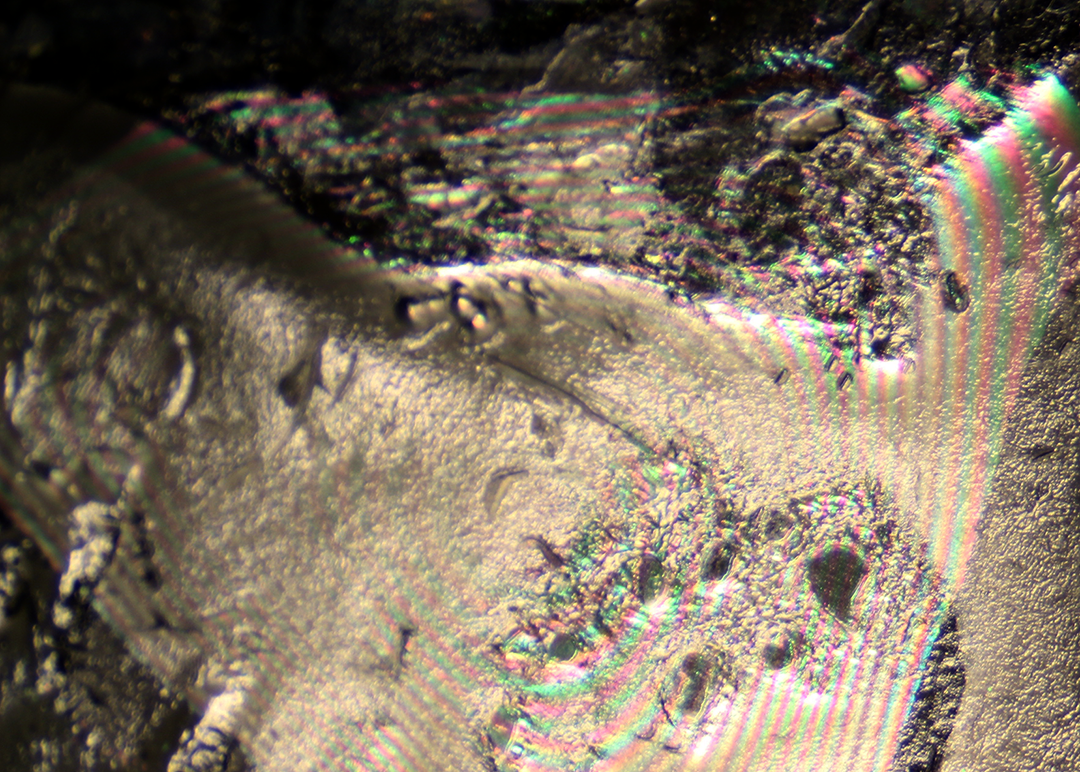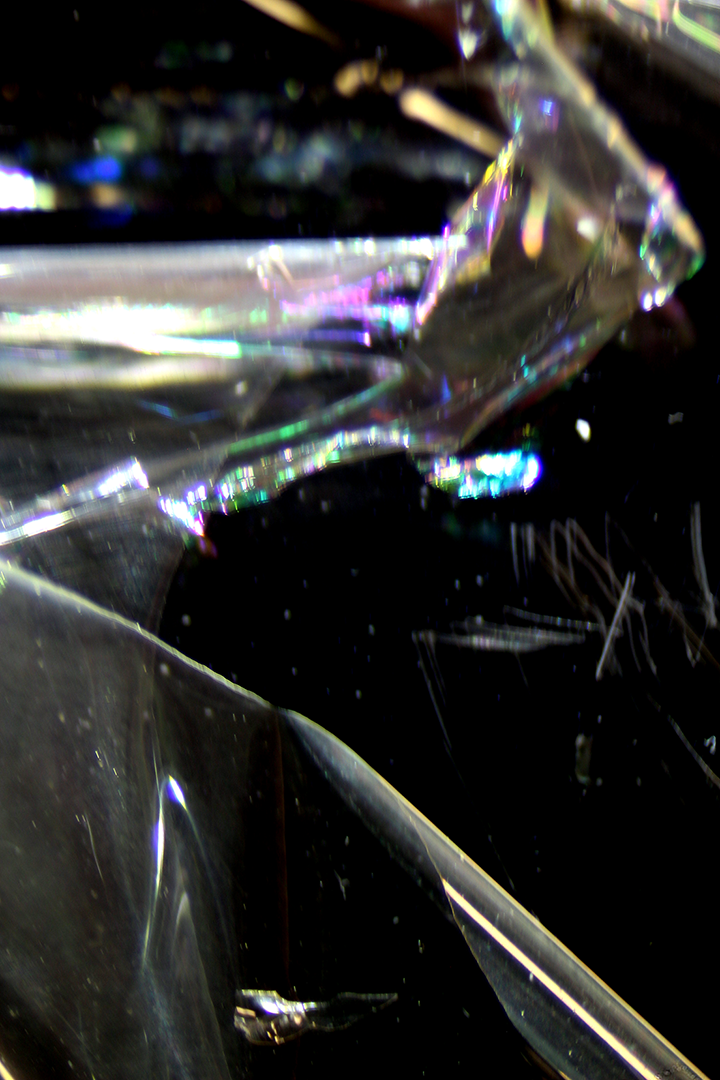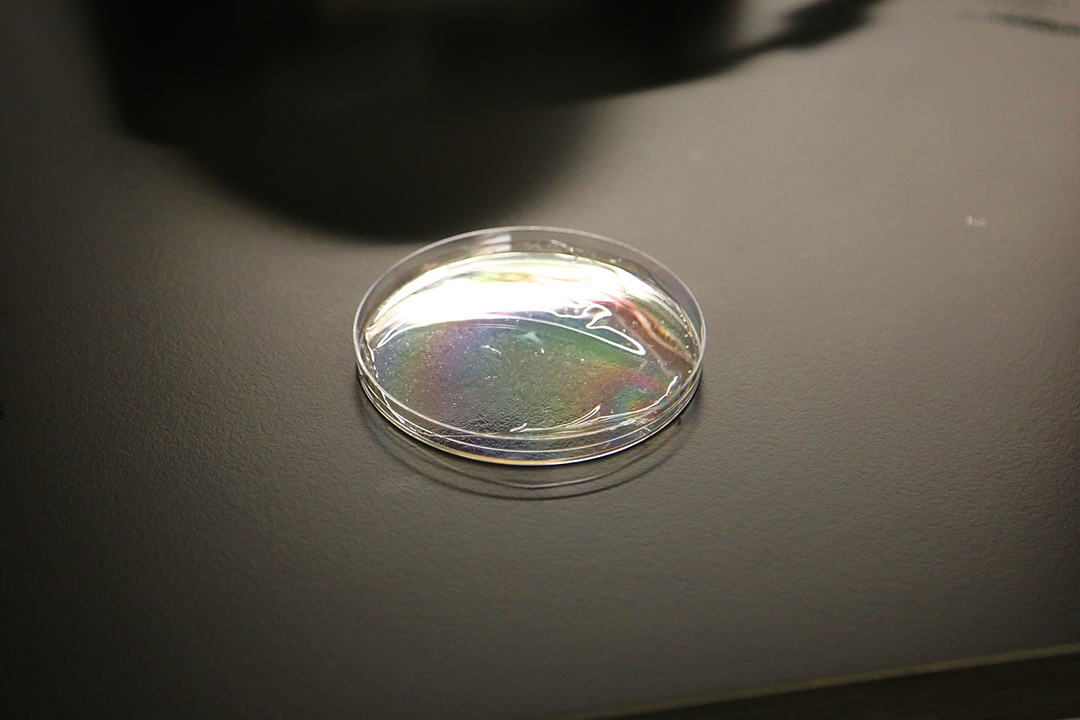

This project was a collaboration between four SAIC artists, myself included. The purpose was to create a project to compete against others in the class to earn the opportunity to present our work at the Biodesign Challenge.
Iridescence is commonly found in various flora and fauna, serving as our team's inspiration. As it is already produced in the environment, we strive to find an alternative method of materializing iridescence without the consumption or production of fossil fuels and petroleum byproducts. Our ultimate goal is to develop both a finishing material and the application process that produces iridescence.
For this project, I headed the research and development of experiments involving chitin and chitosan. After doing extensive research into chitin and chitosan, we decided they were the best candidates for organically producing an iridescent finishing material.
While we referenced multiple protocols that use chitosan, our own methods expand upon current research to create a finishing process for the purpose of creating iridescence.
The chitosan we acquired and used was in the form of a powder. We prepared solutions of chitosan with diluted acetic acid in varying concentrations. We experimented with increasing solution concentration at 1.75%, 2%, and 3%. With an increase in concentration, we found an increase in viscosity. Given our tests, we resolved that the most practical solution was one with a 1.75% by weight solution, a concentration that has been established and used in layer-by-layer deposition research previously. In addition to testing variations in concentration, we experimented with varying surfaces and methods of application. Surface material was important seeing that our goal was to reduce the negative environmental impact the finishing process would have, so we wanted to test materials that were eco-friendly and/or biodegradable. We started with glass, as it was a close substitute to the silicon that was used in multiple protocols that were using chitosan for various applications. We also tested applying the chitosan to Kim wipes and an array of paper products, from pieces of paper towels with varying densities to paper clay in the shape of beads, as to recall our initial idea of creating an eco-friendly Mardi Gras bead. We tried applying the solution to silk fabric as well as a wax-coated surface. The wax-coated surface ended up being the most viable process; displaying the greatest amount of iridescence just after a single dip in the chitosan solution. As we learned from our research, iridescence is produced by thinly layering chitosan. While our results do not show the same structural coloration that is produced by harmful pigments in the industry, iridescence and shimmering were observed in most samples, and interference patterns were observed in the rest. This shows promising leads that can continue to be refined, and be used to produce a strong iridescent finish.
